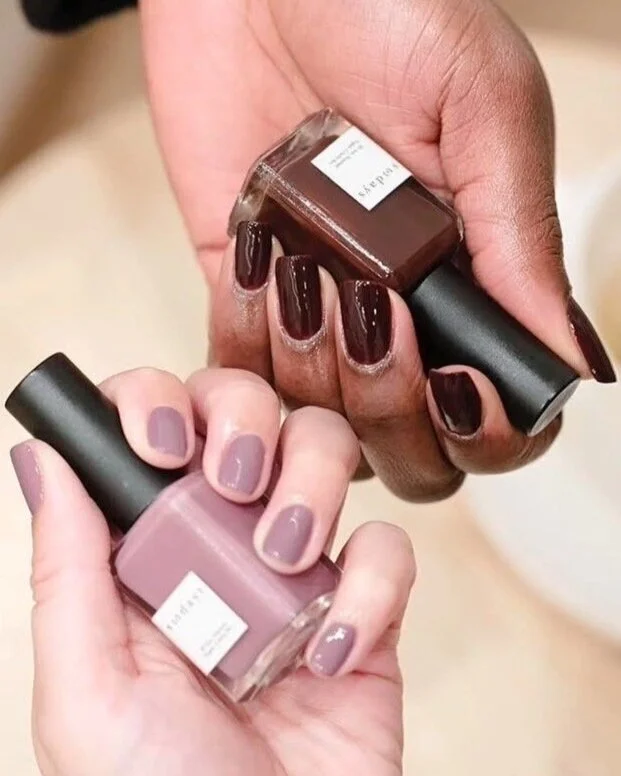
Do you like to use essential oils in your home? Today, you can find many brands selling essential oils and aromatherapy. After all, essential oils have been used since ancient times in civilizations worldwide. However, not all of them are created equal. As someone who likes to use refreshing scents throughout the house (& for my own body), I’ve created a list of trusted brands that make essential oils with the best sustainably-sourced ingredients. My absolute favorite is lavender whenever I wind down from a long day and get ready for bed. As a little girl, my mom would put lavender next to my pillow if I couldn’t sleep well. It always worked, so I’ve continued to use essential oils throughout my life to this day.
Disclosure: Some of the links below are affiliated; we may earn a small commission if you click through and make a purchase. We only feature brands that align with our values and contribute to a better world. Thank you for supporting these brands - and us!
Why Choose Organic Essential Oils?
Organic essential oils come from plants that are grown without synthetic pesticides, herbicides, or genetically modified organisms (GMOs). Choosing certified organic essential oils not only gives you a cleaner, safer product but also supports healthier soil, better farming practices, and cleaner waterways. Conventional oils can contain harmful chemicals and harm the environment over time. By going organic, you reduce your exposure to toxins and help promote biodiversity and healthier ecosystems. It's a small switch with meaningful impact…for your wellness and the planet.
A Safer Alternative to Conventional Candles
Many traditional candles use paraffin wax, which is a petroleum byproduct, along with synthetic fragrances. When people burn these candles, they can release harmful chemicals like benzene and toluene into the air. In contrast, diffusing essential oils offers a cleaner, more sustainable way to scent your home. When used with a water-based diffuser or blended into DIY non-toxic candles with soy or beeswax, essential oils provide natural aromatherapy benefits without the indoor air pollution. They’re also more eco-friendly, often requiring less energy and packaging than mass-produced scented candles. It’s a simple swap that promotes a healthier home and supports a more sustainable lifestyle.
But Essential Oils Aren’t Without Their Concerns
While essential oils offer a more natural alternative to synthetic fragrances, it’s important to recognize that their production isn’t impact-free. Extracting even a small amount of essential oil can require large quantities of plant material (sometimes hundreds or thousands of pounds) raising concerns around overharvesting and biodiversity loss, especially for wildcrafted oils. Additionally, improper farming practices and lack of transparency in the supply chain can lead to exploitation of land and labor. That’s why sourcing matters. Look for essential oils that are certified organic, ethically harvested, and produced by companies that prioritize sustainability, fair trade, and regenerative agriculture.
Our Top Picks for Sustainable, Organic Essential Oils:

1. Grove
Price: $8-21
Certifications: Organic, Cruelty-Free, B-Corp
Grove Co.'s Organic Essential Oils are a fantastic and eco-friendly choice for anyone looking to make their home more sustainable. Each oil is USDA Certified Organic and has been tested for purity, so you know they're free from any synthetics and chemical solvents. Perfect for giving your space a natural boost!
Sourced from plants grown without harmful pesticides or GMOs, these oils support sustainable farming practices and promote a healthier environment. Grove Co. offers a range of essential oils, including lavender, tea tree, orange, eucalyptus, and lemon, each known for their unique aromatherapeutic benefits. Whether used in diffusers, DIY cleaning solutions, or with wool dryer balls for naturally scented laundry, these oils provide a non-toxic alternative to conventional fragrances.
Grove Co., a Certified B Corporation, prioritizes environmental responsibility with carbon-neutral shipping and recyclable packaging.

2. RE Botanicals
Price: $10-60
Certifications: USDA Organic, Glyphosate Free
There's a unique approach to using essential oils. RE Botanicals combines CBD with essential oils to create fantastic roll-on products that I have used often and truly love.
RE Botanicals is the first national brand to sell U.S.-grown, USDA-certified organic hemp. All of their products are grown, extracted, and bottled at their USDA organic farm in South Carolina.
If you're new to using CBD oils, they can be beneficial for a variety of issues, including stress, depression, acne, and pain.

3. Thrive Market
Price: $5-12
Certifications: Organic, Vegan, B-Corp
Have you tried Thrive Market yet? It’s one of my favorite places to buy sustainable food and beauty products. They offer great deals on a wide variety of items, and they also have their own line of essential oils.
Thrive Market crafts their essential oils using the highest quality organic and non-GMO ingredients. They carefully harvest, sort, and gently extract specially selected botanicals through steam distillation to preserve the aroma.
Additionally, Thrive Market is a Certified B Corp, and for every membership, they provide one to a family in need.

4. Plant Therapy
Price: $10-80
Certifications: USDA Organic, Cruelty-Free
Plant Therapy’s USDA Certified Organic essential oils are an excellent choice for anyone looking for pure, sustainable, and transparent wellness options. Each oil comes from plants that are grown without GMOs, synthetic fertilizers, or harmful pesticides, making them safe for you and your family.
The company focuses on ethical sourcing, working with trusted suppliers to ensure both quality and sustainability.
Plant Therapy really cares about the planet. They use renewable energy and are in the EPA’s Green Power Partnership. Their commitment to quality means that every batch of oil is rigorously tested, and you can even access detailed GC-MS reports to know exactly what you’re getting.

5. Public Goods
Price: $13-20
Certifications: Organic, Cruelty-Free
Public Goods offers a curated selection of organic essential oils that align with a minimalist, eco-conscious lifestyle. Each oil is 100% pure, free from synthetic additives, and sourced with sustainability in mind. Their collection includes versatile favorites like lavender, eucalyptus, rosemary, lemon, and tea tree…ideal for aromatherapy, natural cleaning, or DIY skincare!
Public Goods emphasizes transparency and environmental responsibility, using biodegradable packaging and carbon-offset shipping for every order.
Additionally, they plant a tree for every purchase, reinforcing their commitment to a healthier planet.

6. Aromatics International
Price: $9-127
Certifications: USDA Organic
Aromatics International provides high-quality USDA Certified Organic essential oils that are pure, sustainably sourced, and ethically produced. Their oils come from plants grown without harmful pesticides or fertilizers, making them safe for everyone to use.
The company collaborates closely with small-scale farmers and distillers who practice sustainable agriculture, including wildcrafting and organic cultivation, to protect plant biodiversity and support local communities. Each batch undergoes rigorous third-party GC/MS testing to verify its purity and therapeutic quality.
Aromatics International cares about the environment and uses eco-friendly packaging like biodegradable peanuts and recyclable containers to reduce waste.


























































































